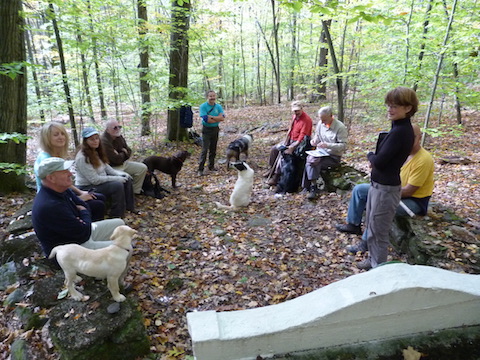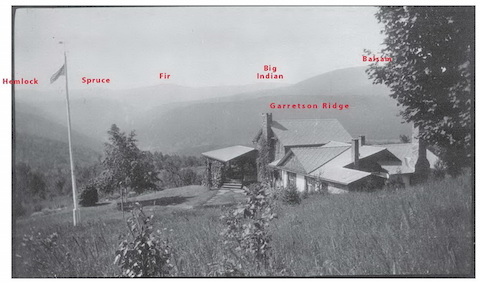A great Catskills trail is hiding in plain sight in the Pine Hill Wild Forest of Shandaken, just off of Route 28. Turn onto Matyas Road and follow it to its end to get to Rochester Hollow, a treat for hikers, snowshoers, skiers, birders, photographers, naturalists, historians and trail runners.
Travel back into time as you hike 3.5 miles and 850 feet to the high point on the old woods road, a marvel of engineering with old stone walls and culverts, carved out of the side of Rose Mountain. The photogenic stream that follows your path for much of the way is interrupted by waterfalls, their banks speck- led with a dozen varieties of spring wildflowers.
The first half of your hike passes through sections of hemlocks and hardwoods. Beyond an old stone gate, the trail passes an attractive birch and maple forest.
As you proceed up the hollow, imagine the small, long-gone settlements that once lined this trail. They dotted the path to Rose Hill, the former Rochester Estate that lies in ruins farther on.
One of the highlights of the trail is just beyond a sharp turn near the trail high point: a monument dedicated to 19th-century Catskills naturalist John Burroughs.
Erected in 1921 by students of the Raymond Riordon School, the monument is surrounded by a small stone wall.
It’s a place to contemplate the contributions of the author who made the Catskills famous.

Above: Joan Burroughs, the great-granddaughter of 19th-century naturalist and author John Burroughs, talks about her famous ancestor at the rededication of his monument in Rochester Hollow. Photo by Alan Via.
Until recently, the monument had been largely abandoned, and showed the ravages of time and abuse. But in 2013, it was restored and rededicated by Burroughs’ great-granddaughter, Joan Burroughs. Although the hike to the monument is a fulfilling outing by itself, there is much more to see along the Rochester Hollow Trail. Recently, the New York State Department of Environmental Conservation constructed a pair of loop trails that meander off of the main path. (See map, above.)
The first, the Burroughs Memorial Forest trail, is marked with yellow blazes. The name honors a small stand of conifers that were planted at the same time that the Burroughs monument was built. The few struggling conifers that remain have not fared well competing for sunlight with their deciduous sisters.
The designers of this short trail wove the path through a series of tall and stately stone fences, intricately constructed by long-ago engineers.
A little more than half a mile beyond the Burroughs monument are the remains of the Rochester estate. Let your imagination roam as you explore old stone walls, a carriage garage and a small pond impounded by a dam. Though the forest now covers the skyline views, 100 years ago you could look across the valley at the peaks of Hemlock, Spruce, Fir, Big Indian and Balsam Mountains. Look down as you walk; you might see some “escaped” irises and vinca, holdovers from the estate’s heyday.

Above: The view from Rose Camp, also known as the Rochester Estate, courtesy of Whitman Richards and Beth Waterman.
On the north side of the trail is a large white birch that Catskills forest historian and naturalist Mike Kudish believes is over 100 years old, making it one of the oldest specimens he’s ever seen. Just beyond, in an open pole stand, is a nicely kept lean-to, a great place for lunch.
If you haven’t seen enough yet, you can avoid backtracking to your vehicle by following the Eignor Farm trail, which is blazed in red. Look for a giant sugar maple that guards an old meadow at the bend of the trail, a gorgeous red oak grove and some interesting stone foundations from the Eignor Farm.
Each of the seasons offers its own charms: spring waterfalls and wildflowers, the cool summer forest and a tunnel of colorful autumn foliage. In winter, the trail is great for snowshoeing and skiing.
Rochester Hollow. 3.5 miles one-way. From Route 28 in Big Indian, in the town of Shandaken, take Matyas Road to the trailhead.
Alan Via is the author of “The Catskill 67: A Hiker’s Guide To The Catskill 100 Highest Peaks Under 3,500” and many articles on the Adirondack and Catskill Mountains. He is working on two new hiking guides.
This article originally appeared in the print version of the 2015 Catskills Outdoor Guide, our annual publication the Catskills outdoors. The Catskills Outdoor Guide is distributed across the Catskills region and at select locations in the NYC metropolitan area. Find a copy near you here















